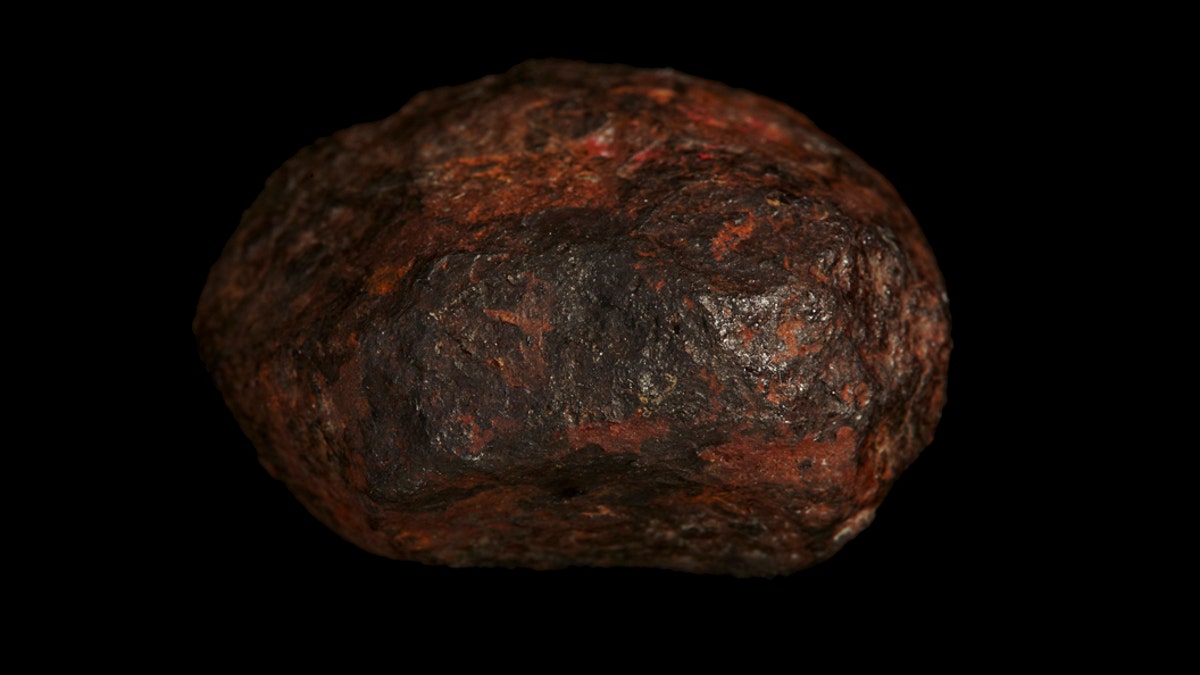Fox News Flash top headlines for September 3
Fox News Flash top headlines for September 3 are here. Check out what's clicking on Foxnews.com
Though it was discovered in the Australian outback in the 1950s and has been studied often since then, researchers only just recently found a surprising result buried inside the Wedderburn meteorite — remnants of an ancient planet and a new mineral not seen in nature.
The seven-ounce red and black meteorite was found in Victoria, Australia in 1951, but planetary scientist Geoffrey Bonnin told Australian news outlet The Age that it's actually from the molten core of a planet from millions of years ago.
“It got blasted apart,” Geoffrey Bonning said in the interview.
METEORITE STRIKES MADE LIFE ON EARTH POSSIBLE, STUDY SAYS

Picture of the Wedderburn meteorite. (Credit: Rodney Start, Museums Victoria)
As a result of the explosion, the meteorite, which had an abundance of carbon inside, became heated. The carbon fused with the iron inside and formed a new mineral known as edscottite, named after Edward Scott, a pioneering cosmochemist from the University of Hawaii.
Edscottite has been seen before, but only inside smelters, as iron is being turned into steel. It's the fact that it has been seen in nature that has allowed researchers to give it its name.
NASA HEADED TOWARDS GIANT GOLDEN ASTEROID THAT COULD MAKE EVERYONE ON EARTH A BILLIONAIRE
Bonning added that "all rocks" are, to some degree, "a little bit radioactive." He pointed out that as the planet exploded, it may have been hit by some other celestial object, causing a mass collision that sent an asteroid flying across the solar system.
From there, it entered the asteroid belt between Mars and Jupiter and ultimately wound up on Earth.
The research has been published in the scientific journal American Mineralogist.





















